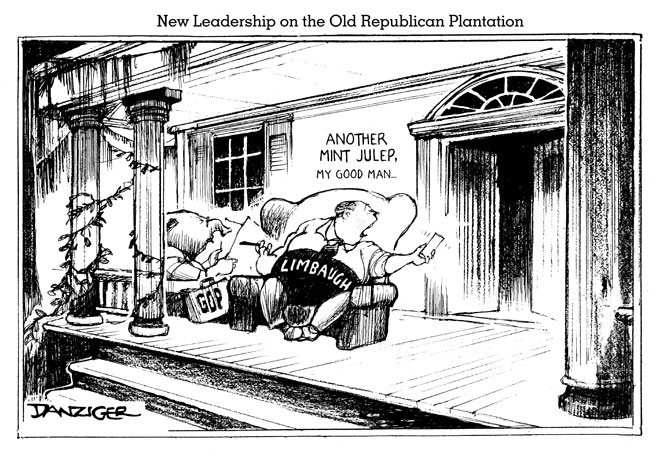Political Intelligence
Blood Drives
Any DWI lawyer in Texas will tell you: If you’ve been drinking and get pulled over, don’t take a Breathalyzer or a blood test. Apparently, that advice for sidestepping convictions has gotten around; the number of Texans submitting to sobriety tests has dropped considerably in recent years. Now police in Austin and a few other Texas cities have resorted to a new, controversial measure-forcing drunk-driving suspects to undergo mandatory blood tests.
Austin police are experimenting with what the department calls “no refusal” days, when a nurse and magistrate remain on standby to issue immediate search warrants and force people stopped for suspected drunk driving to provide blood samples. The program debuted on Halloween, and Austin police tried it again on New Year’s and, most recently, on Super Bowl Sunday. Of the 21 drivers arrested on Feb. 1 after the big game, 12 refused Breathalyzers and were taken to the county jail, presented with a quickly produced search warrant, and forced to provide blood samples.

The Austin Police Department says the no refusal pilot program has been successful in taking dangerous drivers off the road. Of the 21 people arrested on Super Bowl Sunday, the department says 15 had blood-alcohol levels at least twice the legal limit, and five were three times the limit.
Drunk drivers kill more people every year in Texas than in any other state in the country. In 2007, nearly 1,500 people died in alcohol-related accidents on Texas roads. Though those numbers are down slightly from years past, alcohol still causes nearly 40 percent of all Texas traffic deaths. Yet state lawmakers haven’t utilized all the tools at their disposal. Texas remains one of just 10 states without sobriety checkpoints. Neither does Texas have a separate crime for refusing a Breathalyzer-as do 17 other states. In Texas, the penalty for refusing a blood or breath test is purely administrative: a 180-day license suspension. The allure of refusing a test is that without evidence from a Breathalyzer or blood test, prosecutors have a much harder time winning drunk-driving convictions. Many people decide it’s worth temporarily losing their license to avoid a DWI sentence.
While even critics acknowledge that the no refusal program’s goal-reducing the number of drunk drivers-is admirable, the ACLU of Texas has criticized the forced blood tests and called on Austin police to reconsider the program. The ACLU worries that officers might have to use physical force to obtain samples and that as a result, the program could expose police departments to added liability.
Another potential problem is the legality of forced tests. Under Texas law, drivers consent to sobriety testing when they obtain a license. Police still need a search warrant to force someone to provide blood, and the hastily issued no refusal warrants may not hold up in court. In November, for instance, Austin police pulled over a Tarrant County judge who was forced to provide a blood sample. She later challenged the results in court and got them thrown out after an Austin judge ruled that police lacked enough probable cause to justify the warrant.
-Dave Mann
Raising Roofs
A MODEST PROPOSAL TO BOOST AFFORDABLE HOUSING
In the best of times and the worst of times, the state of Texas has maintained a consistent policy approach to funding affordable housing programs: Yawn. At present, the state housing agency has resources to help just 17,000 households, less than 1 percent of those in need. As foreclosures multiply and economic troubles wash over the state, the ranks of people without a decent place to live-or any place at all-are growing.
To stem the tide, a coalition of affordable-housing advocates is calling on the Legislature to drastically expand the Texas Housing Trust Fund, the only state-funded housing program. The fund currently stands at $5 million per year, a paltry amount given the size of Texas and the scale of the affordable-housing shortage here. Of 36 state housing funds, 26 have annual revenues exceeding $10 million a year, according to Mary Brooks of the Washington, D.C.-based Center for Community Change. Florida’s tops the list at $300 million.
The housing coalition wants to bump the Texas fund to about $50 million a year by imposing a $10 fee for recording certain real estate documents. Though the approach has been tried at the Legislature before, to no avail, supporters believe the conditions are ripe this session. One reason: The argument that affordable-housing funding juices local economies and creates jobs has added cachet in these dire economic times.
“It is true that investing in housing increases jobs, and it increases jobs in important sectors right now-the construction sector, for example,” Brooks says.
Another reason: The housing coalition has swelled its ranks with groups that have recently recognized the centrality of housing to their work.
Kim Suiter says her organization, the Lone Star Chapter of the National Multiple Sclerosis Society, is overwhelmed. In the past six months, she says, requests for rental and mortgage-payment assistance have surged 340 percent. Horror stories are mounting, including the one Suiter shares about a wheelchair-bound man in East Texas who couldn’t get into his dilapidated bathroom to bathe. His kids had to hose him off in the yard.
Meanwhile, helping-hand resources are dwindling. The MS Society projects that it will run out of assistance funds by May. “It is beyond our capacity to deal with this crisis,” Suiter says.
Experts describe housing trust funds as extremely flexible. An expanded fund in Texas could be tapped for a wide variety of projects, including traditional uses such as building affordable housing in cities or providing interest-free home loans to families living in border colonias. Funds could also be directed to returning veterans or people left homeless by hurricanes.
Lt. Gov. David Dewhurst has said he supports doubling or tripling the trust fund. But the $10 document fee-modest as it seems-will likely meet stiff resistance from real estate interests, among others. (Dewhurst did not respond to questions about whether he would back the fee.)
Any new fee would “just raise the bar higher for people trying to get into a home,” says Mark Lehman, vice president of governmental affairs for the Texas Association of Realtors. The association employs 13 lobbyists at the Capitol, with lobbying expenditures of at least $1.1 million.
-Forrest Wilder

Clearing the Air
EL PASO CELEBRATES-AND WAITS
For more than 100 years, the American Smelting and Refining Co.-better known as Asarco-spewed toxic lead, cadmium and arsenic over El Paso, New Mexico, and Juarez, Mexico. The City of El Paso has been waging a battle with the company since the 1970s to clean up the mess. In “Dirty Money” (Oct. 31, 2008), the Observer detailed the struggle to close down the polluting smelter. Despite community opposition, the Texas Commission on Environmental Quality granted a permit last year to restart the smelter, mothballed since 1999 because of depressed copper prices.
Before the copper smelter could reopen, however, it was shuttered for good by the economic crisis, according to Asarco’s vice president of environmental affairs, Thomas Aldrich, in a Feb. 3 news release. “Unfortunately, due to the extreme economic conditions world wide that have occurred during the last six months, we can no longer financially afford to continue,” Aldrich wrote.
Opponents of the smelter say the economy was merely a scapegoat. They believe community activism, and a newly empowered Environmental Protection Agency under President Obama, finally forced the company to abandon the project. On the day Asarco made its announcement, the EPA sent two letters warning TCEQ and Asarco officials that tougher federal standards on lead, ozone and particulate matter would make it virtually impossible to reopen the smelter. The federal agency wrote that Asarco’s smelter equipment was “only good for scrap value.”
“These are the first dividends of the Obama administration,” says state Sen. Eliot Shapleigh, an El Paso Democrat. “They graded Asarco’s paper, and the company got an F.”
Shapleigh also credits community protests with shutting down the plant. “The permit would have slid through without a problem if communities hadn’t spoken up about it,” he says.
El Paso citizens celebrated on Feb. 9, when TCEQ canceled Asarco’s permit. But it will be a long time before the smelter stack, or its toxic residue, is gone for good. The next hurdle will be cleaning up the mess. “This will probably be the most expensive cleanup of an industrial site in Texas history,” says Neil Carman, the Clean Air Program director for the Sierra Club. “And it will take years to remediate.”
How expensive? TCEQ estimates $52 million. Carman and Shapleigh think it will cost significantly more. Shapleigh points out that a smelter in Washington cost $123 million to remediate.
Since 2005, when it filed for Chapter 11 bankruptcy protection, Asarco has been caught in a tug-of-war over ownership. A bid last year to buy the troubled mining company by Indian billionaire Anil Agarwal would have created a $1.5 billion fund to clean up Asarco’s toxic legacy across 21 states. The deal was scuttled in October because of the sagging metals market.
More recently, Agarwal has said he still wants to buy the company, but at a significantly lower price. That price would probably mean a smaller environmental trust fund to clean up Asarco’s contaminated sites. The details have yet to be worked out by the bankruptcy judge, the U.S. Department of Justice, and Asarco. Agarwal and his company, Sterlite Industries Ltd., have until March 17 to file a new plan.
-Melissa del Bosque

Island of the Lost
RECOVERY LAGS ON GALVESTON’S NORTH SIDE
In November, two months after Hurricane Ike swept through Galveston, Rev. Norris Burkley looked around his neighborhood-the historically African-American North Side-and didn’t much like what he saw: empty streets, empty churches, empty homes, and few signs that help was on the way. Still, Burkley held out hope that by Christmas his Mt. Olive Missionary Baptist congregation would return and the community would celebrate the holidays just like old times (“The Castaways,” Dec. 12, 2008). Christmas has come and gone, and the much-promised disaster recovery efforts have hardly touched hard-hit poor areas of the island like the North Side.
“It’s still the same,” Burkley says. “I can’t put a hundred people together at no time.”
The neighborhood school has closed, the public housing projects have been condemned, and the island’s storm-battered rental homes sit mostly unoccupied. Islandwide, population is down 30 to 40 percent, officials estimate, based on water usage.
Hurricane Ike unleashed punishment on the whole island without regard to social station or income, but those already living on society’s margins are struggling most in the aftermath. Ted Hanley, executive director of the Jesse Tree, a faith-based social services organization, says public housing residents and those “marginally homeless or homeless before the storm” are in a particularly precarious condition.
“Our entire infrastructure for handling that population is dismantled,” he says. “It is a very vulnerable population-elderly, mentally ill, substance abusers, people who are not good self-advocates. And the process for getting housing is not easy; it’s daunting.”
The federal program designed to ease housing woes, the Disaster Housing Assistance Program, hasn’t been notably helpful. According to the Galveston Housing Authority, only 26 percent of eligible families have found a place to live.
Many, if not most, low-income Galvestonians don’t have a place to come home to. Four of the island’s six public housing projects are still closed, their former occupants scattered mostly to the mainland. The housing authority decided in late January that two of the complexes would be razed and eventually replaced, but not for at least two years. The other two will be renovated, and people allowed to move back, sometime this year.
Renters have been sidelined, too. The lion’s share of relief aid, so far, has been earmarked for homeowners, though three-quarters of Galveston’s population rented before the storm. The same pattern will likely prevail for the $814 million in fresh federal aid slated for the Houston-Galveston region.
“I’m just frightened by the overwhelming number of poor people who will be ineligible for that funding,” Hanley says.
Five months after Ike, Burkley worries that decision-makers have forgotten about those Galvestonians without money or power.
“It’s heartbreaking because I didn’t think Texas would do this,” he says.
-Forrest Wilder


